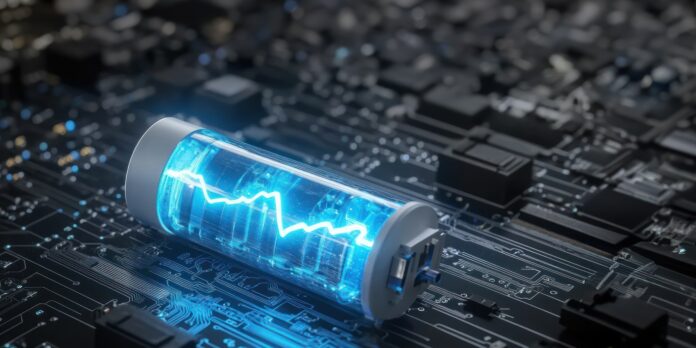Table of Contents
Deep-cycle batteries offer an excellent solution for powering boats, caravans, or solar energy setups thanks to their ability to be discharged to at least 50% without significantly reducing their lifespan.
However, with various types of deep-cycle batteries on the market, from traditional flooded lead-acid to advanced LiFePO4 options, it’s essential to understand the lifespan and maintenance for each.
This article will explore how long each type lasts, the factors influencing its lifespan, and how to extend it.
What Is a Deep Cycle Battery?
A deep cycle battery is designed to be discharged to at least 50% of its capacity, although new LiFePO4 battery chemistries allow them to be discharged to nearly 100%. In comparison, traditional lead-acid models found in cars cannot be discharged by 50%, or it significantly shortens their lifespan.
How Long Do Deep Cycle Batteries Last?
How long they last depends on the type of battery. Let’s take a look.
Flooded Lead Acid Batteries
Flooded lead-acid deep-cycle models are like those in your car but with a better depth of discharge of around 50%. They last between 300 and 1,000 charging cycles and can last up to 8 years if maintained properly.
Gel Batteries
Gel models are also lead-acid, but their sulfuric acid is mixed with silica dust to make a semi-solid electrolyte rather than a liquid. These have a better lifespan, lasting about 10 years or between 500 and 5,000 cycles.
AGM
The absorbent glass matt, or AGM, is another lead-acid chemistry containing no liquid or gel. It offers a maintenance-free version that lasts between 600 and 1,000 charge cycles or about 7 to 10 years.
Lithium-ion
The lithium-ion battery is a more modern model with a lifespan of about 15 years. It can be discharged to about 80% of its capacity and has between 2,000 and 5,000 charge cycles. However, these models are the ones prone to potentially dangerous thermal runaway.
LiFePO4
The LiFePO4 or lithium iron phosphate models are the newest in the deep cycle scene. They are not prone to thermal runaway, making them a safe choice. Their depth of discharge is nearly 100%, and they have 2,000 to 7,000 charge cycles, lasting 10 to 15 years without maintenance.
Because of their superior longevity and safety, these are used in the EcoFlow Portable Power Stations to provide safe, reliable energy independence. For instance, the EcoFlow DELTA Pro has an impressive 3.6kWh capacity. It can be expanded to 25kWh to suit even the highest energy needs; you might be surprised by what the EcoFlow DELTA Pro can do.
What Factors Affect the Lifespan of a Deep Cycle Battery?
Usage
Heavy use requires sufficient recharge to maintain their lifespan. Even though they are designed to handle deep discharge, the more times you do, the more capacity they will lose. Follow your manufacturer’s recommendations for discharge and recharge to extend their lifespan.
Maintenance
Lead-acid models require regular maintenance. The water levels must be topped up to prevent plate damage, and terminals must be cleaned to avoid corrosion. Due to their rapid self-discharge rate, they should be put on a trickle charger if stored for long periods.
LiFePO4 requires no such maintenance. However, with all battery chemistries, always use the recommended chargers, as the wrong charger can reduce their lifespan.
The EcoFlow DELTA Series Portable Power Stations are easy to use because their LiFePO4 batteries require no maintenance, and their built-in battery management system optimises their discharge and recharge cycles. Their low self-discharge rate also means they can sit in storage for quite some time before losing significant capacity.
External Conditions
The environment in which the batteries are used and stored can significantly impact their lifespan. High temperatures increase self-discharge and cause water loss in lead-acid models. Cold temperatures reduce the capacity of all battery chemistries. This is why, when not in use, it is best to store them in a dry location that is cool but not cold.
The EcoFlow Smart Generator (Dual Fuel) is an excellent option for dealing with low temperatures since it uses propane or petrol to recharge it. It also offers an auto-shutdown to prevent overheating and an auto-start to keep the engine warm in cool environments.
How to Extend the Life of Your Deep Cycle Battery?
- Avoid deep discharges and follow the manufacturer’s charging recommendations.
- Monitor the load to ensure you aren’t drawing too much power too fast, as overloading can reduce their lifespan.
- To avoid overcharging any battery, use a charger designed for your battery with a multi-stage charging process or a battery management system. Furthermore, overcharging lead-acid chemistries causes water loss, and undercharging can cause sulphate build-up on the plates.
- Regular maintenance is critical with lead-acid models, including checking the electrolyte levels and keeping the terminals free of corrosion.
- Store all batteries in a cool, dry location when not in use.
Frequently Asked Questions
A 12V flooded lead-acid battery with proper maintenance will last up to 8 years. A 12V gel battery will last about 10 years, while the 12V AGM models will last about 7-10 years. Newer LiFePO4 batteries will last an average 10-15 years without maintenance.
Final Thoughts
Understanding the lifespan and maintenance needs of 12V deep-cycle batteries can help you choose the right option. While traditional lead-acid batteries are widely available, their shorter lifespan and higher maintenance make that bit of initial savings cost you dearly in the long run due to more frequent replacements.
LiFePO4 batteries, like those in EcoFlow Portable Power Stations, offer a long-lasting, maintenance-free solution ideal for heavy use like off-grid applications. Be sure to follow manufacturer charging, storage, and use guidelines for optimal performance and battery longevity.
